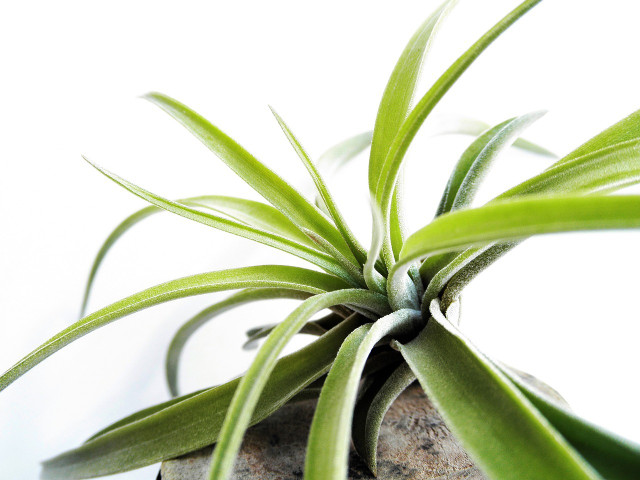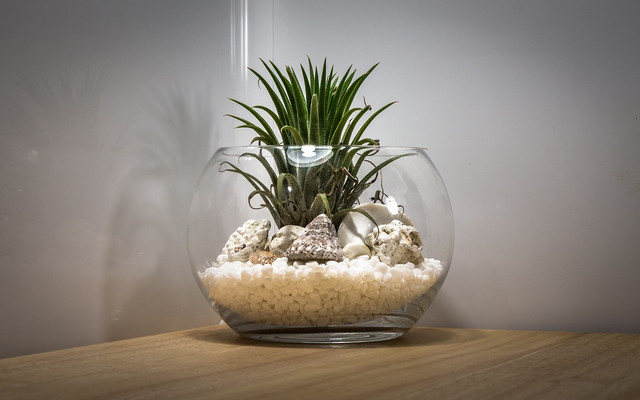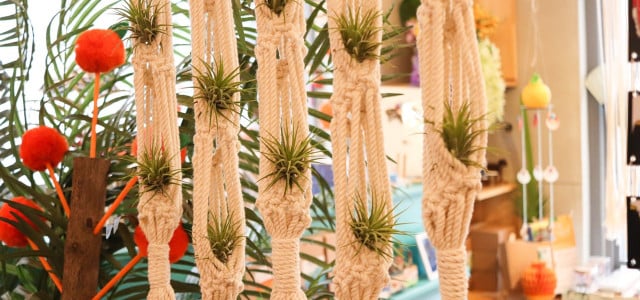Air plants are plants that do not need soil to grow and can be “planted” in the air, but they still need the proper nutrients and water to thrive. Read on to learn more about how to care for air plants and how to water them.
Air plants, or tillandsia plants, do not need soil in order to grow. They still need water, light, and nutrients but must be cared for a little differently than your average houseplant. Follow these simple guidelines to learn how to care for your air plants.
How to Water Air Plants

A big part of taking care of your air plants is watering them properly. To properly water your air plants, take them out of their planting vessel and follow these steps:
Bowl or Sink Method
- Place them in a bowl or in the sink. Fill the bowl/sink and let the air plant soak up the water.
- Let them soak for 10-20 minutes. Ten to twenty minutes is all most air plants need in terms of water. Too much longer and they will start to rot. If your plant looks thirsty (its leaves are not open but curled) you can let the plant sit a bit longer, up to overnight, depending on how dried out the plant is.
- Remove them from the water. Take the plants out of the water and gently shake off any excess water.
- Let them dry for about 4 hours. Place them in an area that will allow them to fully dry within four hours. Some people use wire racks to allow the air to dry them underneath as well as above the plant.
- Return them to the planting vessel. Once they are dry, you can return them to their vessel.
- Find an indirect light spot – air plants like indirect light and moisture, but be careful not to place them in direct sunlight or they will be harmed.
Dunking Method
- Dunk the air plant in water. The alternative to letting the air plant soak up the water is to dunk it in water a few times.
- Take the plant out of the water. Once you have dunked the plant, remove it from the water.
- Dunk again. Dunk the plant again and let the water soak into the plant.
- Remove from the water. Remove the plant quickly from the water and find a place where it can dry out.
- Let dry. Now the plant needs proper time to dry out before being returned to its vessel.
- Return. Once dry, return it to its home.
Misting
Another important part of air plant care is misting. Remember to mist your air plant thoroughly once a week to maintain the right nutrients from the air. Spray your air plant with water until it is wet but not dripping.
How to Care for Air Plants: What Do Air Plants Need?
Because air plants do not need soil in order to thrive, they are popular indoor hanging plants for houses and offices. Although they are relatively easy to care for, there are a few things air plants need in order to thrive:
- Water: You can tell if your air plant needs water if its leaves are starting to curl or are turning brown. Follow the above steps/method for watering your air plant, but be careful not to overwater it.
- Light: Air plants like indirect sunlight, so look for a spot that is southern or eastern facing. You can use artificial lighting, but only specific light like full-spectrum fluorescent lighting or a specific plant bulb are suitable.
- Air Moisture. Air plants use the moisture in the air to get nutrients, so they need some moisture in order to grow. Bathrooms often make a good place for them (if there is a window) because the shower steam will keep the space moist.
- Temperature. Air plants are not too picky about temperature and can live in rooms between 50 and 90 degrees Fahrenheit.
- Fertilizer. These plants only need fertilizer once a month. You can make your own homemade plant food or purchase one specifically for air plants at your local nursery.
Tips and Tricks for Proper Air Plant Care in Aeriums



Air plants can be kept in glass terrariums (often called aeriums because they do not contain soil) but you must care for them properly in order for them to truly thrive.
Air plants can be kept in glass aeriums about three to five feet from windows, far enough away to keep them out of direct sunlight.
A smaller globe will have a more humid climate with less airflow, so these plants will need less watering. A larger globe will have more airflow and require a bit more water.
If you cannot remove the plant from the dome, use the misting method to keep it moist. If you have a mounted aerium, mist the air plant twice a week in order to ensure it gets enough water alongside the airflow.
Read on:
- 13 Noteworthy Houseplants That Are Safe for Cats and Dogs
- Water Propagation for Beginners: A Step by Step Guide
- Flamingo Flowers: Planting Tips and Care
Do you like this post?






